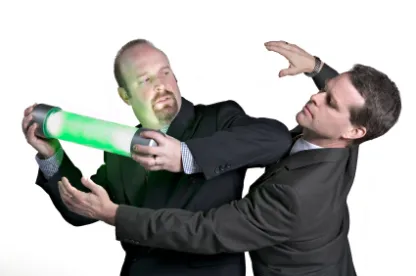In its fourth decision in the ten-year litigation between Akamai and Limelight, the Federal Circuit again addresses the issue of so-called divided infringement, this time providing guidance on the requirement that only a “single party” can directly infringe.
This case had its most momentous turning point last summer, in June 2014, when the Supreme Court rejected the Federal Circuit’s previous finding that Limelight – who performed most of the steps of the patented invention and required its customer to perform the remaining step – was guilty of indirect infringement. The Supreme Court reiterated that there must be a finding of direct infringement in order to have a finding of indirect infringement. Since no-one was arguing that Limelight directly infringed, the Supreme Court invited the Federal Circuit to reassess the issue on remand — and so it has.
The issue regarding direct infringement, which the Federal Circuit avoided in its initial finding, is how to interpret and apply the single-party rule set forth in BMC Res., Inc. v. Paymentech, L.P., 498 F.3d 1373, 1379-81 (Fed. Cir. 2007) and Muniauction, Inc. v. Thomson Corp., 532 F.3d 1318 (Fed. Cir. 2008). The trial court was the first to attempt its application. The jury had found that Limelight infringed, but the trial court reversed that decision in view of Muniauction. Years later, on appeal, the Supreme Court “assum[ed] without deciding that the Federal Circuit’s holding in Muniauction is correct.”
The single-party rule, as summarized in Muniauction, is this: “[W]here the actions of multiple parties combine to perform every step of a claimed method, the claim is directly infringed only if one party exercises ‘control or direction’ over the entire process such that every step is attributable to the controlling party, i.e., the ‘mastermind.’ … [M]ere ‘arms-length cooperation’ will not give rise to direct infringement by any party.” The rule originated in BMC Resources, where the Court spontaneously proclaimed that “[i]nfringement requires… a showing that a defendant has practiced each and every element of the claimed invention,” acknowledged the unfairness of absolving a defendant that has contracted out steps of a patented process to another entity, and concluded that any party that controls or directs the performance of all of the steps of a patented method is guilty of direct infringement.
Upon remand, the Federal Circuit has finally applied the single-party rule to Limelight. In May 2015, a three-judge Federal Circuit panel found that Limelight did not control or direct the entire patented process, because it did not have a contractual or agency relationship with its customers, and was not involved in a joint enterprise with them. But the en banc Federal Circuit has now flipped this decision. It found unanimously that Limelight controlled or directed the entire patented process because it had “condition[ed] [its customers’] participation in an activity or receipt of a benefit upon performance of a step or steps of a patented method and establishe[d] the manner or timing of that performance.”
The Federal Circuit’s latest opinion demonstrates flexibility in assessing whether a single party directs or controls the performance of all the steps of a patented method. As before, where the actions of a second party are performed pursuant to contract with, or as an agent of, the accused infringer, there may be direct infringement. Where the actions of two parties are part of a joint venture with an agreement, common purpose and interest, and equal control, there may be direct infringement. And now, where direction or control is exerted by other means, such as the circumstances of the technology and products at issue, there may be direct infringement.
This increased flexibility in the meaning of “single party” benefits the owners of patents requiring performance by multiple parties – including both life sciences companies with diagnostic patents and patent monetization entities with software patents. For example, the provision of information by users that enables the operation of software according to a patented method may now be deemed under the direction or control of the software provider, such that the provider infringes. Similarly, provision of samples by a doctor to a laboratory for testing according to a patented method may now be deemed under the direction or control of the laboratory, such that it directly infringes a claim requiring the sampling, because the sample is required and the manner of its provision is set by the laboratory. However, a step of diagnosis or treatment by a medical doctor remains unlikely to be deemed under the direction or control of the laboratory, since doctors are permitted to exercise their professional judgment in such matters.
While the Court’s decision may shift the balance in favor of the patentee, both patentees and potential defendants should heed this decision. Potential defendants may want to consider whether the way that they structure and provide their technology could be construed as “directing or controlling” the actions of users. Patentees, for their part, may want to seek claims where actions performed by another party are a necessary predicate to the remaining elements of their claimed invention.




 />i
/>i

